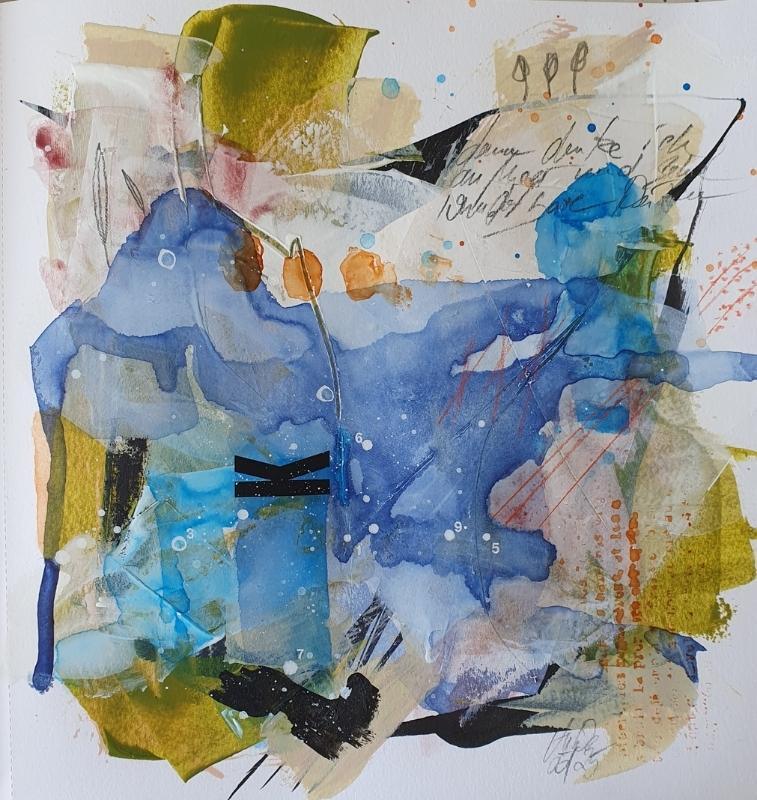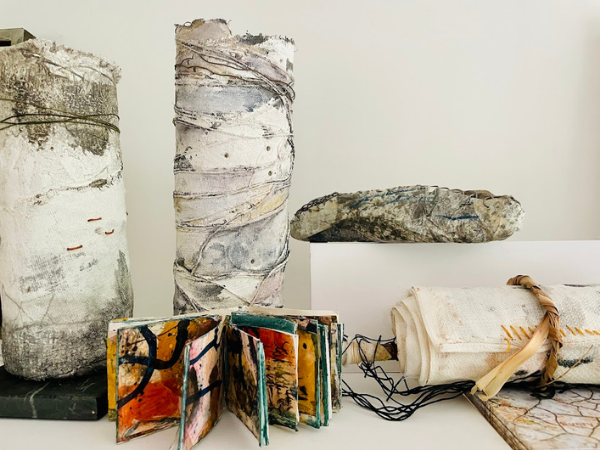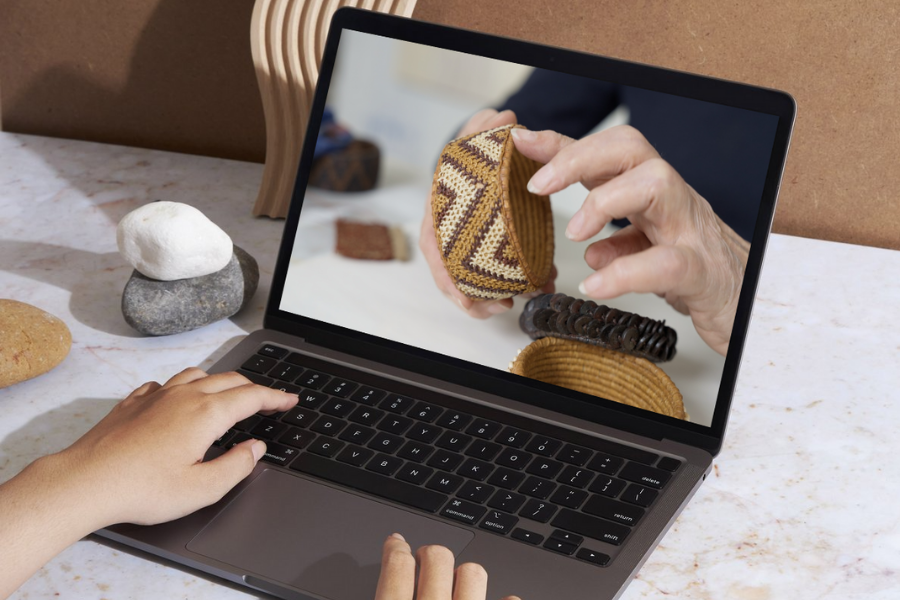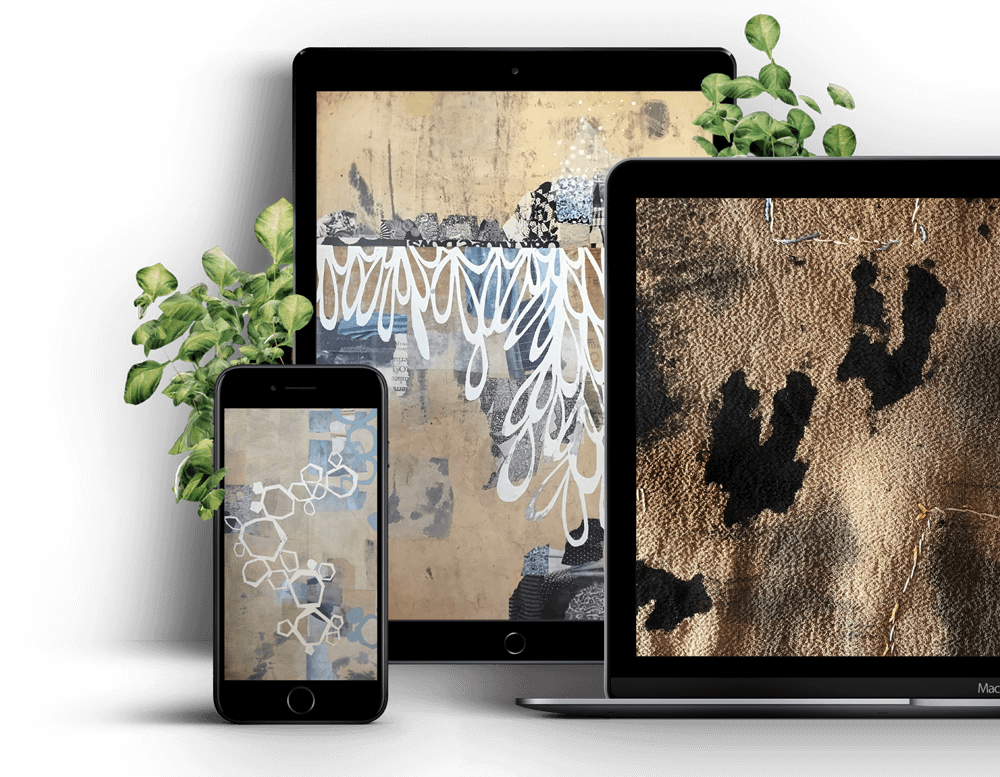Using earth pigments in your mixed media art
Earth pigments aren’t just pretty colours; they’re time capsules, stories pressed into powder, whispers from the land that say, create with me! If you’ve ever wanted your art to feel more grounded, raw, and real, these gifts from nature might just become your new creative obsession. Let’s dig in!
What are earth pigments?
The oldest source of colour, earth pigments are sourced from minerals, soil, and clay, and offer a unique, organic quality that connects artwork to the land itself. Unlike synthetic colours, earth pigments provide a depth and warmth that is difficult to replicate.

Common types of earth pigments:
- Ochre – Ranges from yellow to deep red, depending on iron content.
- Sienna – Sourced from the Italian province of Tuscany, offering warm yellow-brown and reddish tones.
- Umber – A darker pigment with brown and greenish undertones.
- Hematite – A deep, rich red derived from iron ore.
- Carbon Black – Sourced from charred organic materials like bone or wood.
Artwork by Claire Benn
Benefits of using earth pigments in mixed media art.
Whether you’re drawn to their historical significance or intrigued by their raw beauty, incorporating earth pigments into your mixed media art can add depth, texture, and a sense of authenticity to your creative practice.
1. Eco-friendly and sustainable
Unlike synthetic paints, earth pigments are naturally occurring and non-toxic, making them an environmentally conscious choice for artists. Using them allows you to reduce reliance on chemically processed materials while embracing nature’s palette.
2. Rich textural qualities
Because earth pigments are often ground into powder and mixed with binders, they offer a gritty, tactile texture. This makes them perfect for building up layers, enhancing surfaces, and adding depth to mixed media pieces.
3. Historical and cultural significance
Earth pigments carry a deep historical resonance, having been used by indigenous cultures, ancient civilizations, and master painters throughout history. Incorporating them into your work can create a bridge between past and present, grounding your art in a sense of continuity and tradition.

How to use earth pigments in your mixed media work.
1. Creating your own paints
One of the most exciting aspects of working with earth pigments is the ability to create your own paints. To create an earth pigment paint, you’ll need to mix the pigment powder with a binder, which acts as a medium to hold the powder particles together and adhere to surfaces. This presents the perfect opportunity to experiment and mixing pigment powders with different types of binders allows you to experiment with consistency and transparency.
Here’s a basic binder recipe:
- 1 part pigment powder
- 1 part gum arabic (for watercolour), acrylic medium (for acrylic), or linseed oil (for oil paint)
- Water (as needed for desired consistency)
Mix thoroughly to create a smooth, even paint (or repeat as needed for desired consistency) and apply with brushes, palette knives, or even your hands.
2. Incorporating pigments into texture pastes
Earth pigments can also be combined with gesso, gel mediums, or plaster to create textured surfaces. When using this form, try applying the pastes with a palette knife or stencil to add dimension and movement to your artwork.
3. Applying to fabrics and fibres
For fibre artists, earth pigments can be applied to dry or damp fabrics, threads, or paper. Mixing pigments with natural substances like soy milk or alum helps you create beautifully muted, earthy tones on textiles, which you can then incorporate into collage or stitched pieces or even use for mark making.
4. Layering and distressing
Because earth pigments naturally blend well with water, you can use them for washes, splattering, and antiquing effects. Try rubbing them into textured surfaces or layering them over mixed media backgrounds to create a weathered, timeworn effect.

Creating a deeper connection.
Working with earth pigments invites a deeper connection to nature, history, and the creative process itself. Their organic hues, rich textures, and sustainable qualities make them a versatile and meaningful addition to any mixed media artist’s toolkit. Whether you're painting, collaging, or incorporating fibre and cloth, experimenting with earth pigments can open up new creative pathways and inspire work that feels deeply connected.
If you love using earth pigments or are keen to learn more and introduce them into your art practice, you’ll LOVE Out of This Earth with Claire Benn.
Artist and tutor Claire Benn wants you to experience the incredible results of working in this medium and avoid some of the frustrations she felt when she first discovered this new way of working.
By the end of the course, you’ll know how to create your own pigment paint, prepare and work with cloth, layer colour and texture, and develop compositions that reflect your own creative voice. Everything is laid out for you: not just the steps, but the why, and the how, too.

Artwork by Claire Benn
No video selected
Select a video type in the sidebar.
Join Our Newsletter
OUR YOUTUBE CHANNEL
View our interviews and more on our Youtube channel!
OUR FACEBOOK GROUP
Join our Community and stay updated with our upcoming announcements!





